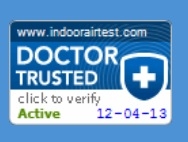News
Legionnaire’s – What You Should Know About The Potential Deadly Bacteria
According to Building Operating Management magazine, expert Victor Yu, MD, Professor of Medicine, University of Pittsburgh; Chief, Infectious Disease Section, VA Medical Center, Pittsburgh, PA, disclosed that “Up to 70% of all buildings greater than three stories in the US may be contaminated with legionella.”
What is Legionnaires' disease?
Legionnaires' disease (LEE-juh-nares) is caused by Legionella bacteria. The bacteria got its name in 1976, when many people who went to a Philadelphia convention of the American Legion suffered from an outbreak of this disease, a type of pneumonia (lung infection). Although this type of bacteria was around before1976, more illness from Legionnaires' disease is being detected now. Due to consumer awareness, added research and technological advances in healthcare Legionnaires disease identification is becoming more apparent.
Each year, between 8,000 and 18,000 people are hospitalized with Legionnaires' disease in the U.S. However, many infections are not diagnosed or reported, so this number may be higher. More illness is usually found in the summer and early fall, but it can happen any time of year.
Legionnaires' disease can have symptoms like many other forms of pneumonia, so it can be hard to diagnose at first. Signs of the disease can include: a high fever, chills, and a cough. Some people may also suffer from muscle aches and headaches. Chest X-rays are needed to find the pneumonia caused by the bacteria, and other tests can be done on sputum (phlegm), as well as blood or urine to find evidence of the bacteria in the body.
These symptoms usually begin 2 to 14 days after being exposed to the bacteria.
A milder infection caused by the same type of Legionella bacteria is called Pontiac Fever . The symptoms of Pontiac Fever usually last for 2 to 5 days and may also include fever, headaches, and muscle aches; however, there is no pneumonia. Symptoms go away on their own without treatment and without causing further problems.
Pontiac Fever and Legionnaires' disease may also be called "Legionellosis" (LEE-juh-nuh-low-sis) separately or together.
Legionnaires' disease can be very serious and can cause death in up to 5% to 30% of cases. Most cases can be treated successfully with antibiotics [drugs that kill bacteria], and healthy people usually recover from infection.
“These deaths can be prevented, just by taking small steps such as monitoring and testing of Legionella bacteria in and around their potential source of origin,” stated Dr. Rajiv R Sahay, Director of Environmental Diagnostics Laboratory (EDLab) in Clearwater, FL. Infections in humans are noticed mostly after breathing a mist or vapor (small droplet of water in the air) contaminated with Legionella. Therefore, sampling in addition to source sampling is important in the prevention of Legionnaires’ disease.
Where do Legionella bacteria come from?
The Legionella bacteria are found naturally in the environment, usually in water and associated environments. The bacteria grow best in warm water, like the kind found in hot tubs, cooling towers, hot water tanks, large plumbing systems, or parts of the air-conditioning systems of large buildings. They do not seem to grow in car or window air-conditioners.
How do people get Legionnaires' disease?
People get Legionnaires' disease when they breathe in a mist or vapor (small droplets of water in the air) that has been contaminated with the bacteria. One example might be from breathing in the steam from a whirlpool spa that has not been properly cleaned and disinfected.
The bacteria are NOT spread from one person to another person.
Outbreaks are when two or more people become ill in the same place at about the same time, such as patients in hospitals. Hospital buildings have complex water systems, and many people in hospitals already have illnesses that increase their risk for Legionella infection.
Other outbreaks have been linked to aerosol sources in the community, or with cruise ships and hotels, with the most likely sources being whirlpool spas, cooling towers (air-conditioning units from large buildings), and water used for drinking and bathing.
Who gets this disease?
People most at risk of getting sick from the bacteria are older people (usually 50 years of age or older), as well as people who are current or former smokers, or those who have a chronic lung disease (like emphysema).
People who have weak immune systems from diseases like cancer, diabetes, or kidney failure are also more likely to get sick from Legionella bacteria. People who take drugs to suppress (weaken) the immune system (like after a transplant operation or chemotherapy) are also at higher risk.
What should I do if I think I was exposed to Legionella bacteria?
Most people exposed to the bacteria do not become ill. If you have reason to believe you were exposed to the bacteria, talk to your doctor or local health department. Be sure to mention if you have traveled in the last two weeks.
A person diagnosed with Legionnaires' disease in the workplace is not a threat to others who share office space or other areas with him or her. However, if you believe that there your workplace was the source of the person's illness, contact your local health department.
How is Legionnaires’ disease diagnosed?
Most people with Legionnaires’ disease will have pneumonia (lung infection) since the Legionella bacteria grow and thrive in the lungs. Pneumonia is confirmed either by chest x-ray or clinical diagnosis. Several laboratory tests can be used to detect the Legionella bacteria within the body. The most commonly used laboratory test for diagnosis is the urinary antigen test, which detects Legionella bacteria from a urine specimen, or sample. If the patient has pneumonia and the test is positive, then the patient is considered to have Legionnaires’ disease. Additionally, if the Legionella bacteria are cultured (isolated and grown on a special media) from a lung biopsy specimen, respiratory secretions, or various other sites, the diagnosis of Legionnaires’ disease is also considered confirmed. Finally, paired sera (blood specimens) that show a specific increase in antibody levels when drawn shortly after illness and several weeks following recovery, can also be used to confirm the diagnosis.
New Legionella Standard: To respond to this growing threat to public health, the American Society of Heating, Refrigerating and Air-Conditioning Engineers (ASHRAE) had released ASHRAE Standard 188: Prevention of Legionellosis Associated with Building Water Systems. The new standard will require that facility managers implement stronger safeguards through pro-active risk assessment and risk management practices.
ASHRAE 188, was written by engineering, microbiology, disease prevention and water treatment experts, providing a comprehensive set of practices that facility managers can follow to help prevent Legionellosis. The standard specifies uniform practices for risk assessment and management. It covers potable water systems; cooling towers and evaporative condensers; whirlpool spas; decorative fountains; other water features; and aerosol-generating air coolers, humidifiers, and washers.
Under the new ASHRAE 188 standard, facility managers are charged with conducting an annual survey to determine what risk is present in their buildings. Specific risk factors called out in the standard include:
· Multiple housing units with one or more centralized water heaters
· More than 10 stories (including levels below grade)
· Cooling tower or evaporative condenser
· One or more whirlpools or spas within or adjacent to building
· Devices that release aerosols (e.g., ornamental fountains, misters, air washers or humidifiers)
· Incoming potable water containing less than 0.5 ppm residual halogen such as chlorine
· Inpatient health care facility
· Occupants primarily older than age 65
· Occupants receiving chemotherapy for cancer or bone marrow transplantation.
If a facility manager identifies the presence of one or more risk factors after conducting the survey, then a risk management team must be assembled to prepare and implement a HACCP plan to prevent the threat posed by Legionella bacteria.
Where can I go for Legionella help?
Dr. Rajiv Sahay, Director of Laboratory services at Environmental Diagnostics laboratory (EDLab), an AIHA and CDC accredited laboraotry stated that “as a result of our AIHA accreditation as a environmental microbiology laboratory and CDC ELITE credentials, our clients are assured of highest accuracy scientifically and legally defensible data available.” Dr. Sahay further stated that “we look forward to continuing to work with many facilities staff in helping them build a strong proactive Legionella program in their facilities.”
For more information on developing a proactive Legionella testing program for your buildings call the Building Scientists at Pure Air Control Services or go to: Environmental Diagnostics Laboratory (EDlab) Edlab.org, a CDC ELITE laboratory (contact Dr. Rajiv Sahay 1-800-422-7873 ext 303). DIY Legionella kits are available at: www.INDOORAIRTEST.com and other fine retailers.
EDLab presently has Legionella sampling contracts with VA Medical Centers (VISN 19, 12 and 8) among other national clients. Ask us for a contract rate for your facility at 1-800-422-7873 ext 802.
About Pure Air Control Services, Inc.
Alan Wozniak founded Pure Air Control Services, Inc. in 1984 as a small mechanical contracting firm. Today, the firm sets the industry standard for indoor environmental quality diagnosis and remediation.
Pure Air’s nationally performed services include: Building Sciences Evaluation; Building Health Check; an AIHA accredited Environmental Microbiology Laboratory; Environmental Project Management; and Mold Remediation Services, among other indoor environmental services.
The company’s expanding client roster includes the FAA, Walt Disney World, General Services Administration (GSA); Allstate Insurance; CBRE, Carrier Air Conditioning; NAVFAC, DOT, USACE, US Army, and many other Fortune 500 companies, school boards, and city, state, and county governments, making Pure Air Control Services the reliable industry leader.

More News

IAQ Test Kits (DIY), PURE-Steam Coil Cleaning and PURE-Decon Room Treatment Showcased at the Annual FRACCA Conference
This annual event provides an opportunity for licensed contractors throughout the State of Florida to obtain all 14 state-required hours of continuing education over the course of the two-day event.
Released On: 3/8/2014
Views: 4359

Free Legionella Webinar: Detection & Identification Workshop
Although this type of bacteria was around before1976, more illness from Legionnaires' disease is being detected now. Due to consumer awareness, added research and technological advances in healthcare Legionnaires disease identification is becomi ...
Released On: 3/4/2014
Views: 4214

Why Some High-Performance Buildings Are Failing?
Performance of a building depends on its structured integrity, preventive maintenance, as well as periodical monitoring of the environmental conditions essential for its functionality.
Released On: 2/19/2014
Views: 4245

Legionnaire’s – What You Should Know About The Potential Deadly Bacteria
According to Building Operating Management magazine, expert Victor Yu, MD, Professor of Medicine, University of Pittsburgh; Chief, Infectious Disease Section, VA Medical Center, Pittsburgh, PA, disclosed that “Up to 70% of all buildings greater t ...
Released On: 2/18/2014
Views: 3805

Managing of Indoor Environments: Problems and Solutions - IEQ WEBINAR
Released On: 1/22/2014
Views: 3702

Save Energy and Improve Indoor Air Quality (IAQ) with PURE-Steam Deep Coil Cleaning
High efficiency coils are extremely susceptible to blockage from dust accumulation because once lodged deeply within the fins bacteria and mold may initiate growth, which not only compounds the blockage problems but also gives rise to excessive o ...
Released On: 1/8/2014
Views: 6478

January is National Radon Action Month
Exposure to radon is the second leading cause of lung cancer after smoking. Radon is an odorless, tasteless and invisible gas produced by the decay of naturally occurring uranium in soil and water.
Released On: 1/8/2014
Views: 4137

Why indoor air quality is important to all of us?
World Health Organization (WHO Guidelines for Indoor Air Quality, 2009) concluded that the most important effect is increased prevalence of respiratory symptoms, allergies and asthma, as well as perturbation of the immunological systems
Released On: 12/31/2013
Views: 4193

Pure Air Control Services Launches New Interactive Website
The website is a true indoor environmental resource for the private and public sector including consumers, educational facilities e.g. schools, universities, along with city, county state and federal governments, healthcare and the public sector.
Released On: 12/20/2013
Views: 3191

Pure Air Control Services Awarded Certification from Doctor Trusted
“We are very proud to have been given the opportunity to display that we are a Doctor Trusted recipient. We will continue as always to help provide our customers with a great products and services,” stated Dr. Rajiv Sahay, environmental analytica ...
Released On: 12/11/2013
Views: 4138

IndoorAirTest.com Receives Seal of Approval by Doctor Trusted
IndoorAirtest.com is very proud to have a Doctor Trusted seal of approval displayed on our website, giving our customers more confidence when shopping with us.
Released On: 12/4/2013
Views: 4562

PURE-Decon/Sanosil, Reduces Sick Days Caused by Infection
Released On: 10/2/2013
Views: 3490

Controlling Asthma & Allergy Triggers Through Source Identification
The assessment of allergens in a house dust sample is an essential step for allergen-avoidance and provides information essential for allergen-reducing measures, in addition to managing the indoor environment from a health and hygiene point of view
Released On: 9/18/2013
Views: 5583

Hospitals Get a “Clean Bill of Health” with Innovative IAQ/Energy Solutions
Healthcare-associated infections (HAIs) are infections that patients acquire during the course of receiving healthcare treatment for other conditions.
Released On: 7/31/2013
Views: 4611

How Safe is Formaldehyde in our Buildings and Homes?
Released On: 7/17/2013
Views: 4883

Commercial Energy Solutions Seminar July 26, 2013
Released On: 7/11/2013
Views: 4939

Health Risks Associated With Indoor Microbes
Some common and frequently reported microbes of the indoor environment include, but are not limited to, viruses, bacteria, mycoplasma, mold (fungi), yeast, protozoa, etc.
Released On: 6/26/2013
Views: 6093

Aspergillosis: A Cause for Indoor Concerns?
In indoor environments, this fungus can be transported from outside or may propagate on building materials such as cellulose rich sheet rocks, etc. and can generally be isolated from floors, carpets, mattress dust, Heating Ventilation Air Conditi ...
Released On: 6/19/2013
Views: 10793

Map
Pure Air Control, Services, Inc.
Get DirectionsPure Air Control, Services, Inc.
-
4911 Creekside Drive
Clearwater, Florida 33760
United States - 1 (800) 422-7873


